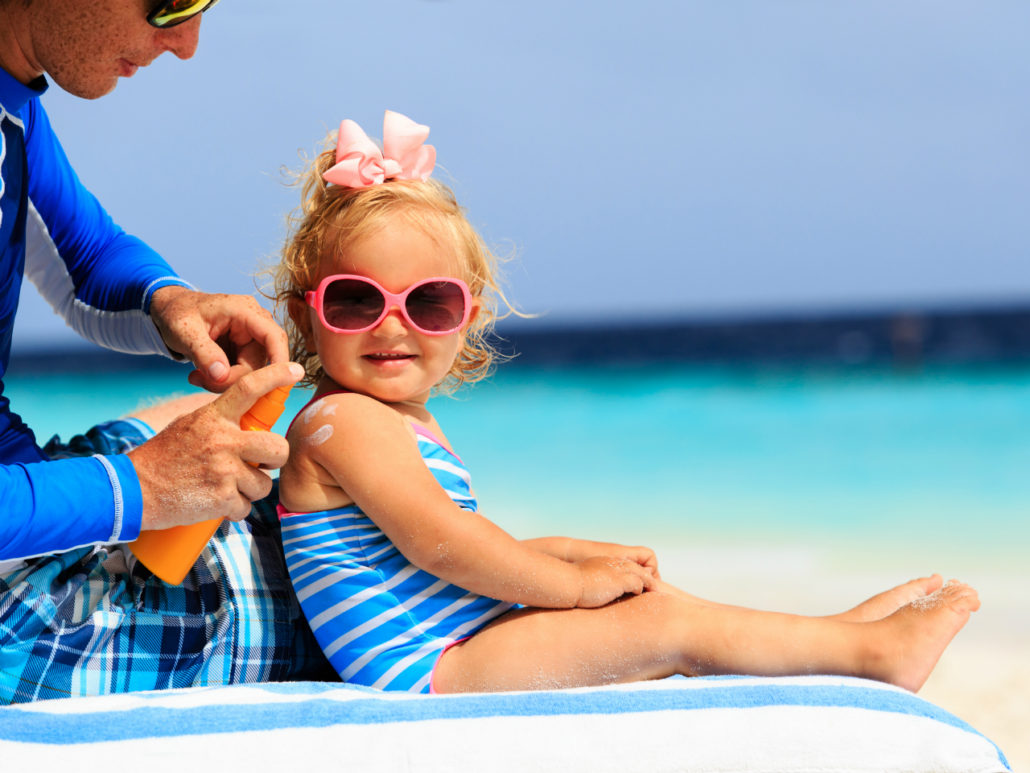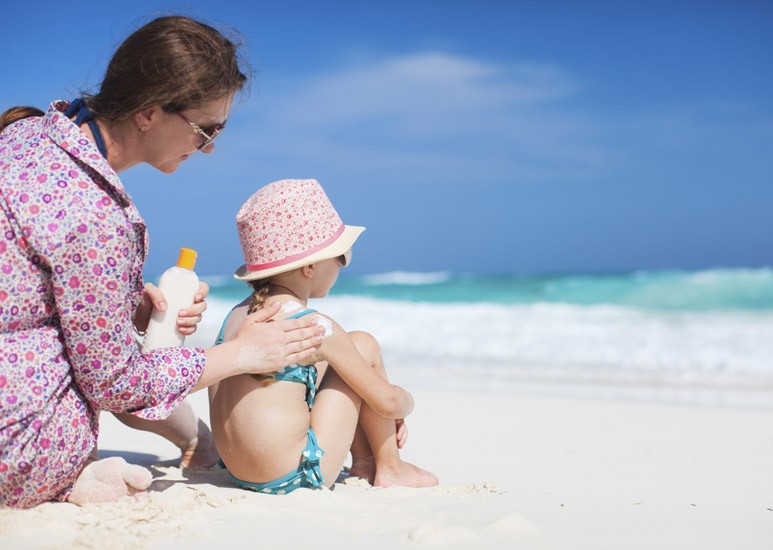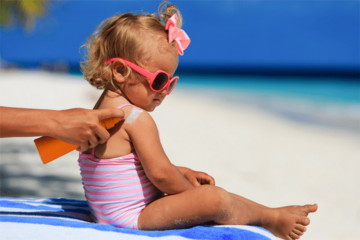
Apart from its many benefits, the sun also emits invisible and harmful ultraviolet (UV) rays that can cause irreparable damage to the skin and the eyes
The majority of the sun’s radiation comprises UV-A rays. While they are responsible for the absorption of vitamin D, they can also cause a lot of damage to your child’s skin.
Your child’s delicate skin is highly vulnerable to these rays, and excessive exposure to them at a tender age can destroy the skin cells and cause various lifelong ailments, such as cancer.
Playing in the sun for hours without taking preventive measures can cause irreversible damage to your child’s developing body.
What Causes Sunburns?
Sunburn is an inflammatory reaction caused by UV radiation on the skin’s outermost layers after long-term sun exposure. Our body secretes a dark pigment called melanin to protect itself from the sun. When we’re exposed to the sun, it leads to excessive melanin production, causing a tan.
Melanin only provides limited protection to the skin. When children spend a long time in the sun, their bodies may not be able to fight the sun’s harmful rays, leading to sunburns.
It is vital to protect your children from the sun’s harmful rays to avoid ailments, premature aging of the skin, and terminal illnesses. Children are highly prone to incidental sun exposure, which refers to the exposure to the sun that they are not even aware of. Data suggest that approximately 25% of sun exposure occurs before 18 years of age.
However, despite the harm caused by sun exposure, it doesn’t mean you should stop your children from going out and engaging in outdoor activities. You could take various measures to ensure your children are safe in the sun. Read on to know more.

Sun Safety Tips For Kids
Listed below are some sun safety tips for kids that you could help them follow while playing outdoors. Teach your children to include the following steps in their daily routine and stay protected from the sun’s harmful rays.
1. Applying sunscreen to exposed parts of the body
Pick broad-spectrum sunscreen products that have a minimum SPF
(sun protection factor) of 15. Even if the weather is cloudy, your child must apply sunscreen since the UV rays can pass through clouds as well. It is ideal for your child to apply sunscreen 20-30 minutes before stepping out to play. Sunscreen needs to be reapplied after every two to three hours for continued protection against the sunrays. It should also be reapplied after swimming or activities that may cause sweating.

2. Wearing sunglasses or UV-protection glasses
Sunglasses not only make your children look trendy but also protect their eyes from the UV rays. Do a bit of research and find sunglasses with a “UV” label and those that can block a minimum of 99% of the UV rays.

3. Wearing sun-protective or UV-protective clothing
Dressing up in light, full-sleeved cotton clothing is the best way to stay protected from UV rays. But while buying summer clothes for your child, you should also look for the UPF (ultraviolet protection factor) in them. This is similar to the SPF in creams and lotions. The higher the UPF, the better the sun protection offered by the clothing. Choose a fabric with a minimum UPF of 30.

4. Finding shade and spending time under trees
Teach your child to look for shade while playing outdoors during the day. This can also minimize incidental sun exposure. Consider creating outdoor shade areas in your backyard for your children and their peers. You could also get them to pitch a pop-up tent around your home or use umbrellas to safeguard themselves from the sun.

5. Wearing wide-brimmed hats and caps
Hats and caps are perfect for your kids to stay protected from the sun. What’s more, you can get wide-brimmed hats in some trendy prints and bright colors that will match your child’s outfit well.

6. Avoiding sun during the peak time of the day
Normally, the sun’s rays are the harshest from 10 a.m. to 4 p.m. It’s not advisable for young children to go out during this time. You can engage them in some engaging indoor activities during this time.



0 Comments